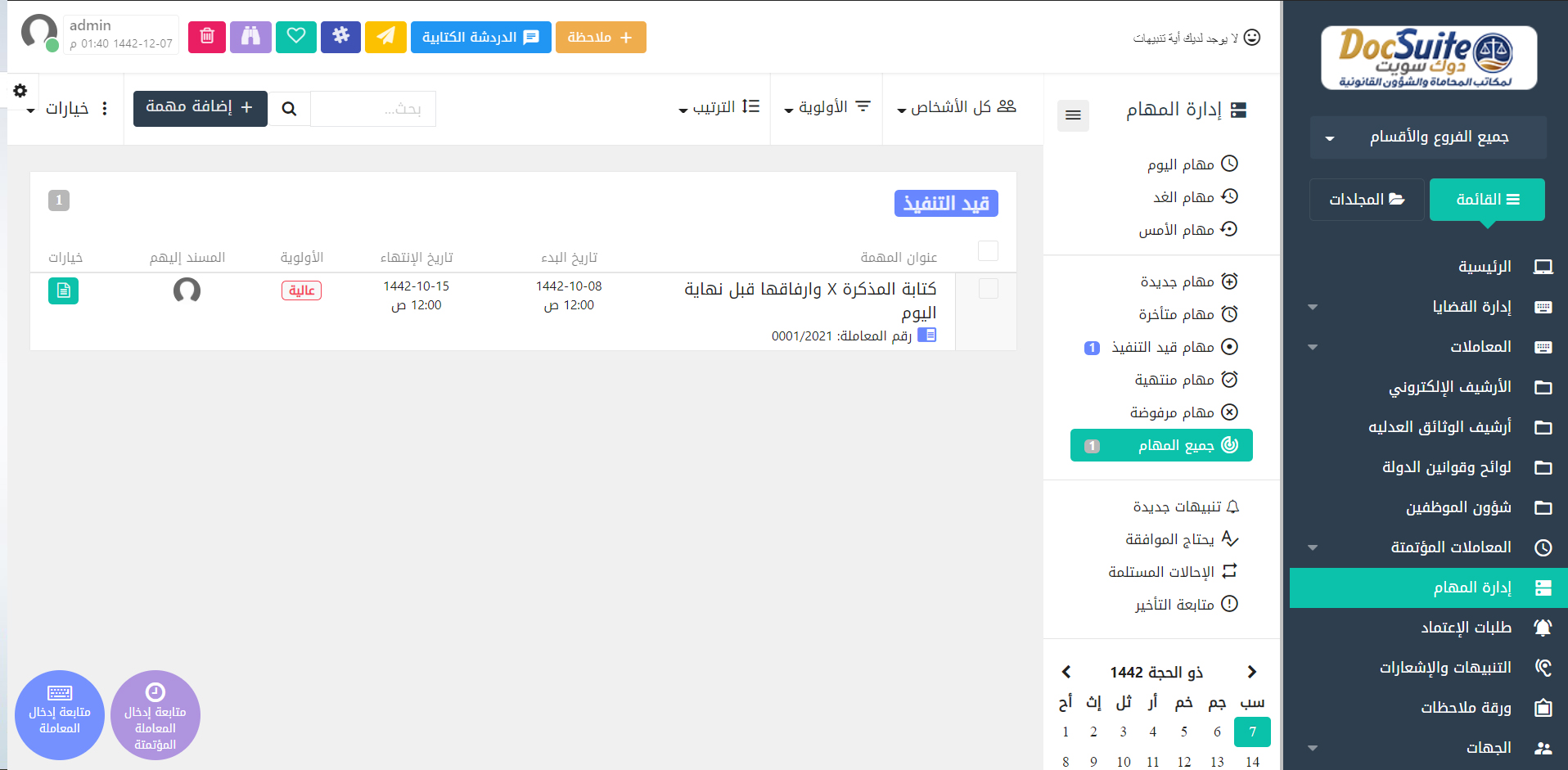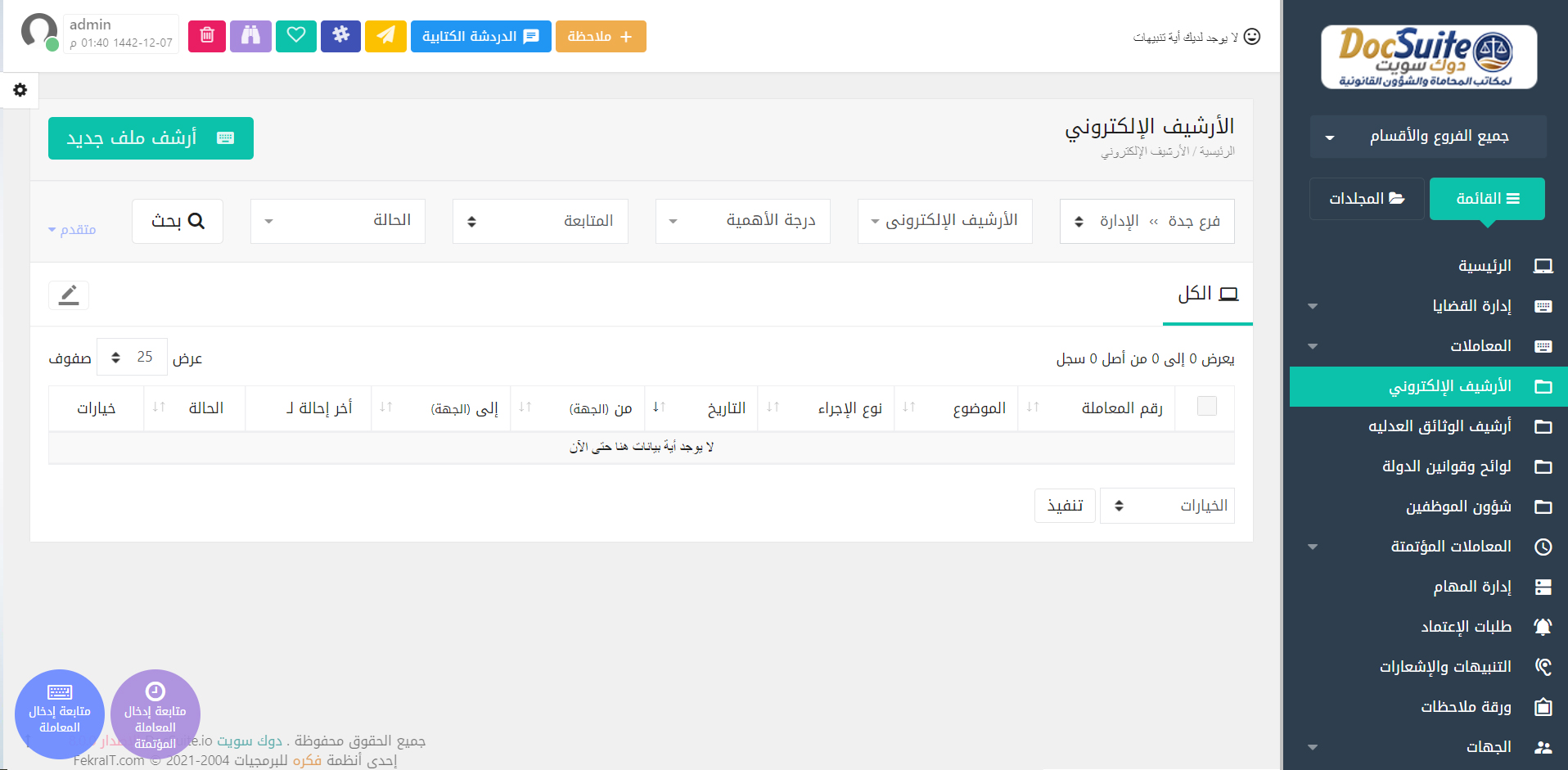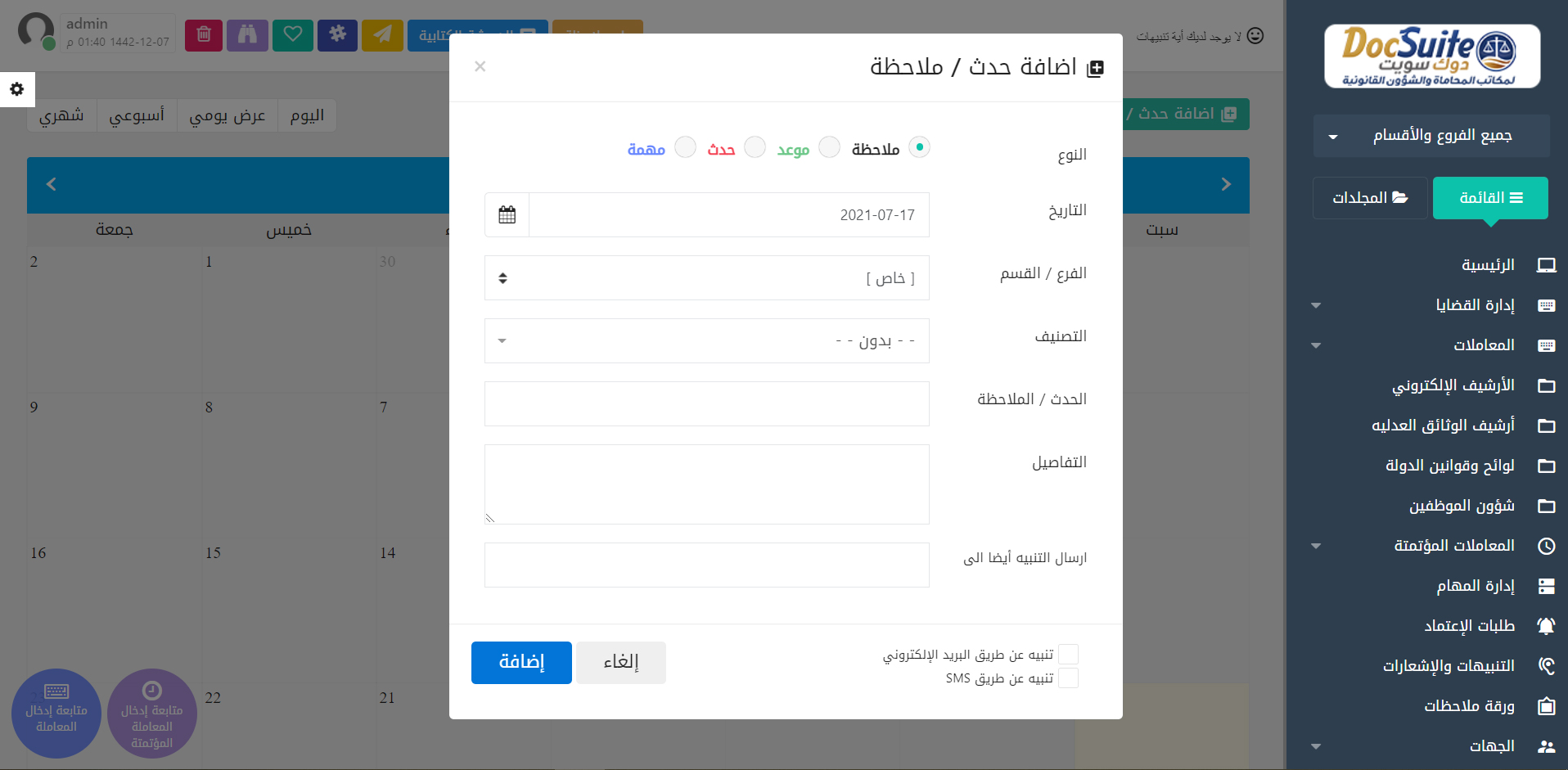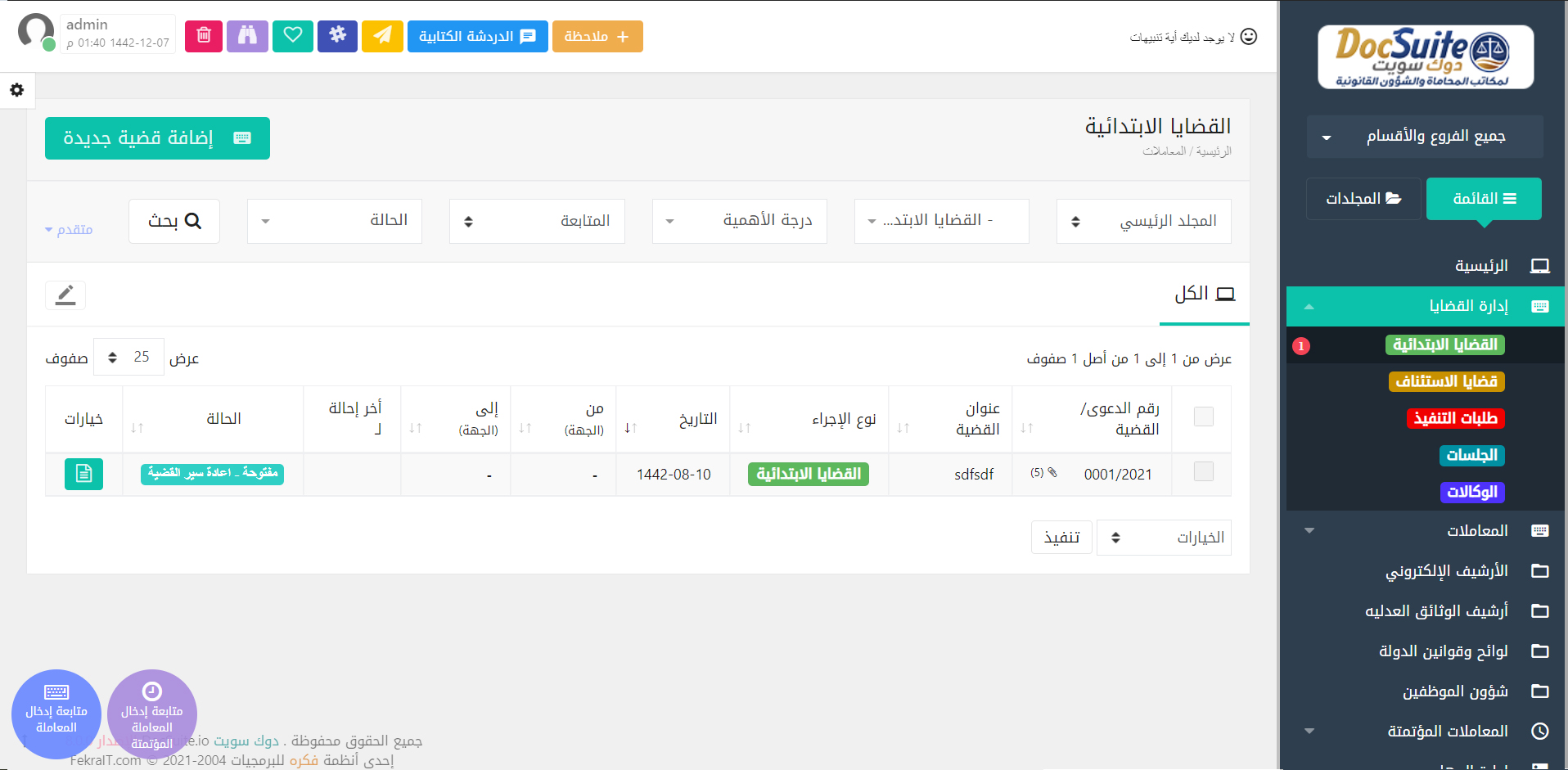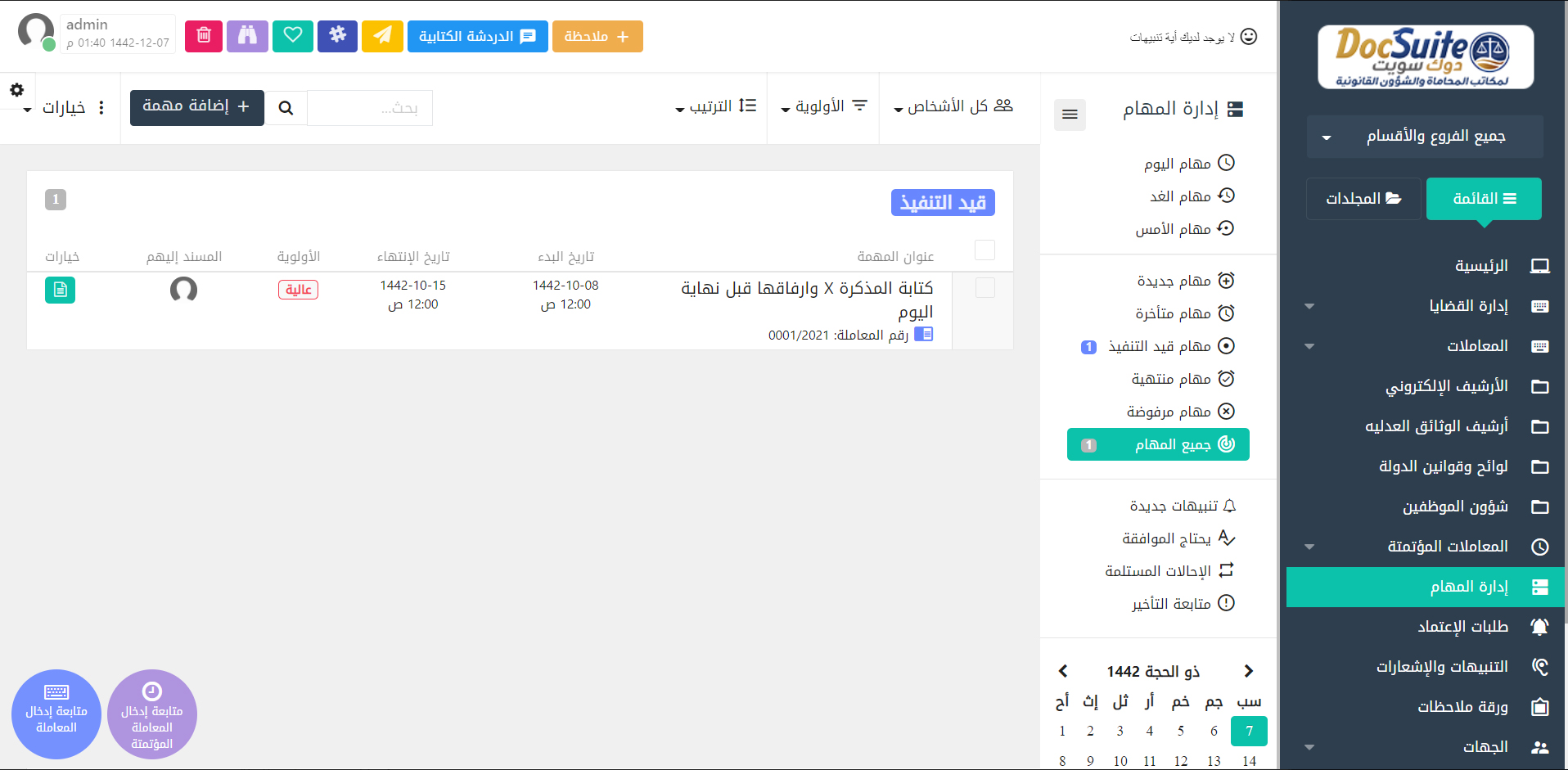DocSuite | Sports governance
The best cloud system that supports sports club governance
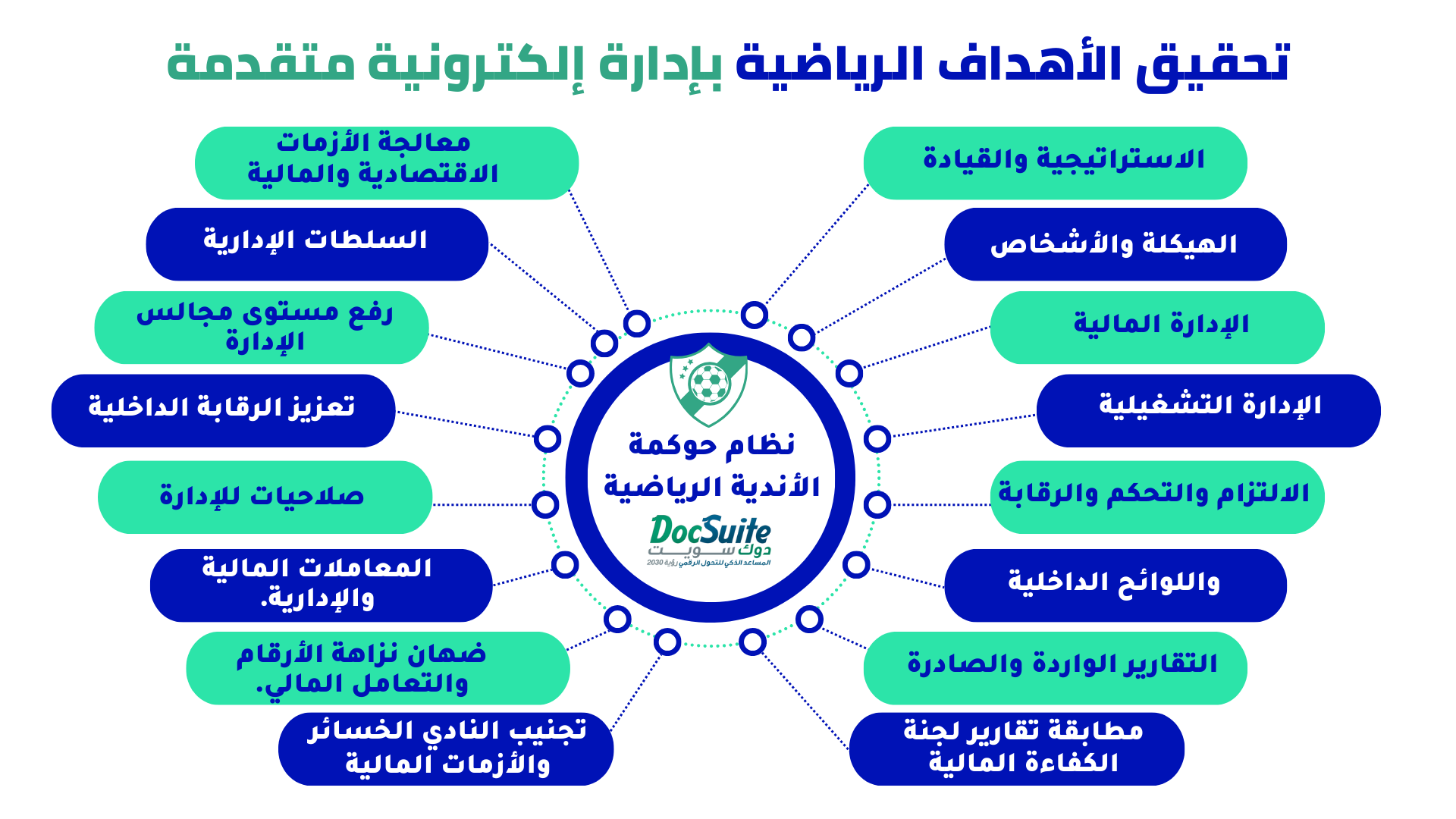
Find out more about sports governance and electronic systems
Now you can rely on the best sports governance system to simplify club management, improve communication between administrators, members, players, coaches... and increase the effectiveness of sports performance.
Steps to implement sports governance


Definition of strategy levels
We begin by defining the strategy and initiatives, setting goals, and developing operational and financial plans.
Formation of the Board of Directors and committees
Management is formed, members are appointed, and subsidiary committees are formed to facilitate management and decision-making.
Create a permissions matrix
In order to define the powers and responsibilities of each individual and to organize and direct internal operations.
Establishing regulations and instructions
Then, it sets internal regulations and standards of integrity and behavior that must be followed by club members.
Definition of stakeholders
Identifying and directing relationships with internal and external partners and linking them to the club’s goals.

Managing and implementing goals
Define and track operational and financial goals and implementation steps to ensure desired performance is achieved.
Preparing qualification reports
A set of reports is prepared periodically, including qualification evaluation reports in accordance with governance standards.

Preparing governance controls reports
It includes preparing a set of reports to evaluate the governance controls implemented in accordance with specified standards.

Follow up and measure performance
Follow up on the implementation of plans and measure the club’s performance at the level of various committees, goals, and games.
Electronic archiving and administrative communications for the governance of sports institutions
The system provides comprehensive management of sports committees, which enhances the organization of operations and directs decisions efficiently. The system also provides an environment that collects and organizes data related to sports clubs, enabling comprehensive analysis and informed strategic decisions. In addition, the system contributes to improving the communication process between committee members and relevant parties, which contributes to enhancing effective coordination and cooperation in the field of sports governance.
This program contributes greatly to achieving your goals through:
Features of the Doc Sweat sports knit system
Management of sports committees
The system allows the creation and classification of various committees and the entry of all committee data for better communication between them.
Committee card
It provides a card for each committee containing details of members, tasks, meetings, statements, assignments, projects, etc.
Member management
Members from inside and outside the Ministry can be added, with all their data, information, and role in the committee entered.
Internal advertising
The system allows the committee administrator to send committee announcements and alerts to members registered on the system.
Follow up on recommendations
The system allows adding recommendations at the meeting or committee level and determining the level of importance and the item related to the meeting.
Task Management
The tasks required by the various administrative units within the committee can be organized and managed and the results of each task can be followed up.
Meeting management
The system allows adding and managing meetings with various information such as agenda, minutes, decisions and recommendations.
Testimonials
It is possible to request a statement from the system administrator to a representative of the ministry or other entities, and update the statement without request.
Open and close committee
The committee can be reopened and closed as needed, with an explanation of the reasons for reopening and closing according to the workflow.

Move towards a more transparent future
<div><span style="color: rgb(0, 0, 0);">Enjoy more efficient management with organizational tools that empower you to achieve your goals</span><br></div><div><span style="font-size: 13.92px;">Join the digital transformation and sports governance journey and enjoy an advanced sports governance experience that enhances your success</span></div>

Sports clubs
The system provides sports clubs with powerful tools to improve their management and performance. It enables it to organize its members and committees effectively, facilitate decision-making processes and provide important recommendations. The system enhances the transparency of internal operations and enables performance monitoring. Providing accurate and reliable reports to monitor performance and achieve set goals.
Sports federations
DocSuite sports governance system plays a vital role in improving the performance of sports federations. He can organize the management of committees and members and facilitate the processes of organizing tournaments and sporting events. It provides an integrated platform for communicating with sports clubs and institutions, and provides accurate reports to evaluate performance and monitor improvements.
Sports governing bodies
Sports governing bodies are major beneficiaries of the Doc Suite sports governance system. The system provides them with powerful monitoring and regulatory tools and contributes to enhancing the implementation of governance and compliance standards. It also facilitates the management of committees and tasks, the exchange of information between different parties, and the provision of reliable reports to support decision-making.
Other sports organizations
The Sports Governance Program helps organize and plan sporting events effectively, and facilitates communication and coordination among participants. Performance reports provide valuable information to measure success and achieve event goals. The system also works to enhance communication and cooperation with clubs and federations to enhance the sports industry in general.
Common Questions
DocSuite Sports Governance System is a model for governance and management in sports organizations. This model aims to achieve greater transparency and accountability within the sport's administrative structures. It was developed by the Swiss Sports Commission, a non-profit organization that works to support and promote the concept of sports governance.
The principles of the Doc Suit sports governance system include several important aspects, including:
- Transparency: Encouraging sports organizations to publish their information and decisions publicly, which contributes to increasing transparency and clarity among the public.
- Accountability: Providing mechanisms to hold management and members of the organization accountable for their decisions and performance, by developing systems to monitor and evaluate the performance of officials.
- Separation of powers: Ensuring that there is a clear distribution of powers within the sports organization, so that executive powers are separated from legislative and supervisory powers.
- Pluralism of voices: Ensuring representation of all stakeholders within the sporting organization, and encouraging the active participation of members, players, coaches and fans.
Doc Suite sports governance system seeks to promote good governance and transparency in sports organizations, which contributes to achieving more sustainable development and growth of sports.
The sports governance system “DocSuite” contributes significantly to enhancing the transparency of the management of sports organizations through several ways:
Disseminating information: The Doc Suite model encourages sports organizations to disseminate detailed information about their organizational structures and activities. This includes publishing information about leadership structures, board members and important decisions.
- Performance Reports: Sports organizations are required to submit periodic reports on their performance, achievements and achievements. These reports provide the public with a comprehensive view of the organization's performance and how it achieves its goals.
- Decision-making procedures: The Doc Suite sports governance system must follow transparent decision-making procedures. Members and stakeholders must have a clear understanding of how decisions are made and the factors influencing them.
- Disclosure of Conflicts of Interest: Board members and officers within a sports organization must disclose any potential conflicts of interest that may affect their decisions.
- Public Participation: The Doc Suite model provides the opportunity for the public, members and sports stakeholders to participate in discussion sessions and make important decisions, which increases the transparency of these processes.
- Monitoring and monitoring: Doc Suite principles encourage the existence of mechanisms to monitor the organization's performance and ensure that procedures and principles are properly implemented, in order to ensure compliance with the principles of transparency.
Overall, Doc Suite aims to establish a strong culture of transparency within sports organizations, which contributes to building trust between members and the public and achieving more effective and fair management.
The concept of sports club governance refers to the framework and principles on which the management and supervision of sports clubs are based. Club Governance aims to achieve effective and transparent management of clubs, including implementing decisions responsibly and fairly, and achieving the club's objectives and the interests of all its members and stakeholders.
Although the application of the concept of sports club governance can vary from one club to another, it usually includes the following principles:
- Transparency and accountability: This principle includes publishing information in a transparent manner about the club’s structures and management decisions, and submitting periodic financial and performance reports that allow members and the public to accurately understand the club’s situation.
- Distribution of powers and duties: A balance must be achieved in the distribution of powers and responsibilities between the various members of the board of directors and the club’s executive body.
- Administrative Council: This principle is the existence of a board of directors that is responsible for making strategic decisions and supervising the club’s activities.
- Public Participation: It encourages the participation of members and the public in discussion sessions and making important decisions for the club, which enhances the transparency of decision-making processes.
- Credibility and Integrity: Board members and officials must adhere to standards of credibility and integrity in their work and decision-making.
- Education and Awareness: Educational and awareness opportunities must be provided to board members and members to increase their awareness of sports club governance concepts.
The benefits of governance extend to a variety of fields and sectors, including the sports sector and other economic and social sectors. Here are some of the key benefits of governance:
- Enhancing trust and reputation: Good governance contributes to building trust among members, partners, and the public, which enhances the organization’s reputation and helps achieve its success.
- Improved risk management: Good governance helps identify and manage risks effectively, reducing the impacts of unexpected events and contributing to business sustainability.
- Increased efficiency and efficiency: By clearly distributing roles and responsibilities, improvement in resource management and activity planning is achieved, leading to increased efficiency and efficiency.
- Improving decisions: Thanks to systematic and transparent decision-making processes, governance contributes to achieving more accurate and impactful decisions.
- Directing growth strategies: Governance enables organizations to develop specific and appropriate growth strategies, which helps guide expansion and development more effectively.
- Promoting diversity and inclusion: Governance encourages better diversity in management structures and boards, which contributes to greater representation of diverse opinions and experiences.
- Improving relationships with stakeholders: Good governance helps build positive relationships with stakeholders such as investors, customers, suppliers, and government agencies.
- Adapting to changes: Good governance enables the organization to adapt to internal and external changes faster and more flexibly.
Sports governance conditions are based on a set of principles and requirements that aim to achieve effective and transparent management within sports institutions. These conditions ensure that the interests of all members and the public are balanced. Here is a review of some basic conditions and requirements for governance in sports institutions:
- Strategic vision: There must be a clear strategic vision that defines the long-term goals and directions of the sports organization, and this vision must be shared and understood by all members.
- Disclosure and transparency: The institution must be committed to publishing information and data related to management decisions and the institution’s performance on a regular and transparent basis, which contributes to enhancing trust and transparency.
- Accountability: Leaders and boards must take responsibility for their decisions and actions, and provide clear and logical explanations for any decisions or events that could affect the organization.
- Equality and Justice: All members must be treated equally and fairly, without favoring anyone at the expense of others, whether in appointments, promotions, or distribution of resources.
- Effectiveness and efficiency: Effectiveness must be achieved in management processes, achieving goals with the least possible amount of waste, and enhancing efficiency in planning and implementing activities.
- Role and responsibilities of boards of directors: The role and responsibilities of boards of directors must be clearly defined, including their role in making strategic decisions and monitoring the performance of executive management.
- Member rights: Member rights must be provided, including their right to participate in making important decisions, and to obtain the information necessary to understand and monitor the organization’s performance.
Therefore, sports institutions must adhere to these conditions and requirements to ensure a high level of governance and the development of a healthy and sustainable sports environment.
It aims to achieve effective and transparent management in sports clubs and ensure that their goals are achieved flexibly and responsibly.
Sports governance objectives:
- Applying international practices: Governance aims to make sports clubs follow the best international practices in the field of management, accountability and transparency.
- Creating balanced structures: The goal is to achieve a balance between the various components of the sports club, such as the administrative board, executive management and members, to ensure the achievement of common goals.
- Achieving accountability: Governance aims to make all members of the organization accountable for their decisions and actions, while providing accountability mechanisms when needed.
- Promoting transparency and disclosure: The goal is to provide accurate and transparent information and data to the public about the club’s decisions and performance.
- Achieving sustainability: Governance aims to develop sustainable strategies for clubs that contribute to the continuity of their activities in the long term.
Governance evaluation criteria in the aforementioned context include a set of different aspects that must be evaluated to ensure effective and transparent management in sports institutions. Here's a breakdown of these standards:
Leadership and management:
- Evaluating the efficiency and trends of the Board of Directors and its ability to achieve the strategic objectives of the organization.
- Evaluating the extent to which board members fit the needs and objectives of the organization.
Structure and people:
- Evaluating the organization's organizational structure and distributing powers and responsibilities.
- Evaluating the competence of people in the organization and determining their suitability for the responsibilities assigned to them.
financial management:
- Evaluate the policies and procedures for managing money and financial resources of the organization.
- Evaluating the extent to which financial planning is compatible with the organization’s goals and strategy.
Operational management:
- Evaluating the efficiency and effectiveness of operational and administrative processes within the organization.
- Evaluating the extent to which good practices are applied in managing operations and achieving efficiency.
Commitment, control and oversight:
- Evaluate the institution’s compliance with local and international laws and regulations related to sports.
- Evaluating control and oversight mechanisms and procedures and evaluating their effectiveness.
Behaviors and internal regulations:
- Evaluate the extent to which there are internal regulations that regulate behaviors and ethics within the organization.
- Evaluate the extent to which these regulations and behaviors are applied regularly and effectively.
Matching documents with reports:
- Evaluating the conformity of reports submitted by the institution with financial and administrative documents and records.
Conformity of Financial Efficiency Committee reports:
- Evaluating the extent to which the organization’s Financial Efficiency Committee reports match the facts and financial statements.
- Addressing economic and financial crises: Governance contributes to guiding clubs towards making sustainable and effective financial decisions, thus enabling them to deal with any financial crises better and reduce their impact.
- Limiting the use of administrative powers: Governance limits the arbitrary use of administrative powers and ensures that decisions are made in a transparent manner and based on integrity and the public interest.
- Raising the level of boards of directors: Governance enhances the level of boards of directors by clearly defining their role and responsibilities, and directing them towards achieving the club’s strategic goals.
- Strengthening internal control: Through governance principles, the internal control system is strengthened and activities and operations are effectively directed and monitored.
- No conflict of powers: Governance contributes to defining and clarifying the role of the Board of Directors and the various members, thus avoiding conflicts and conflicts in their powers.
- Transparency and credibility: Governance ensures the transparency and credibility of financial and administrative processes, which builds trust among members, partners and the public.
- Ensuring integrity: Governance protects against abuses and corruption by imposing standards of integrity and ethics for sports activities.
- Avoid financial losses: By implementing governance principles, investments and spending are directed appropriately, reducing the risk of financial losses.
In short, governance works to achieve the sustainability and success of sports clubs by directing operations and making decisions effectively and responsibly, in a way that ensures the achievement of specific goals and the public interest.







